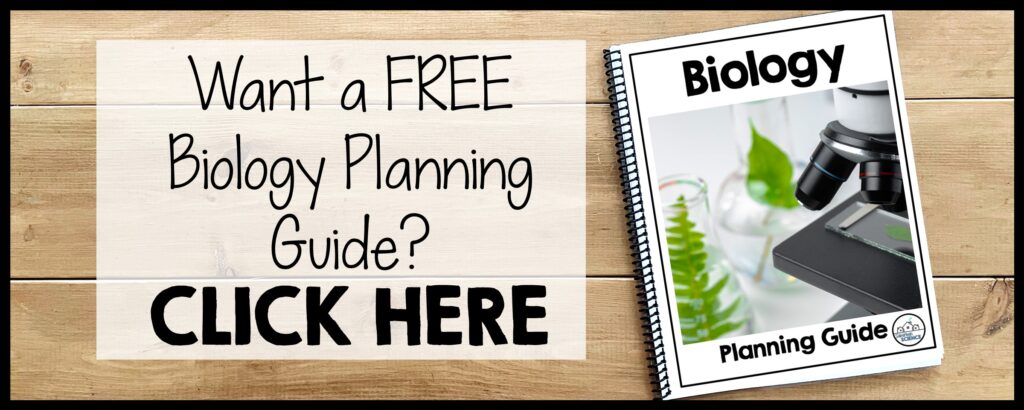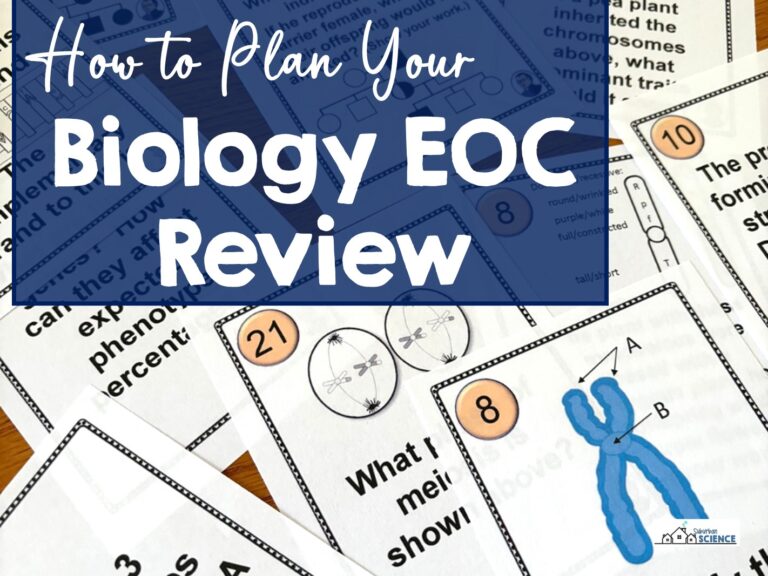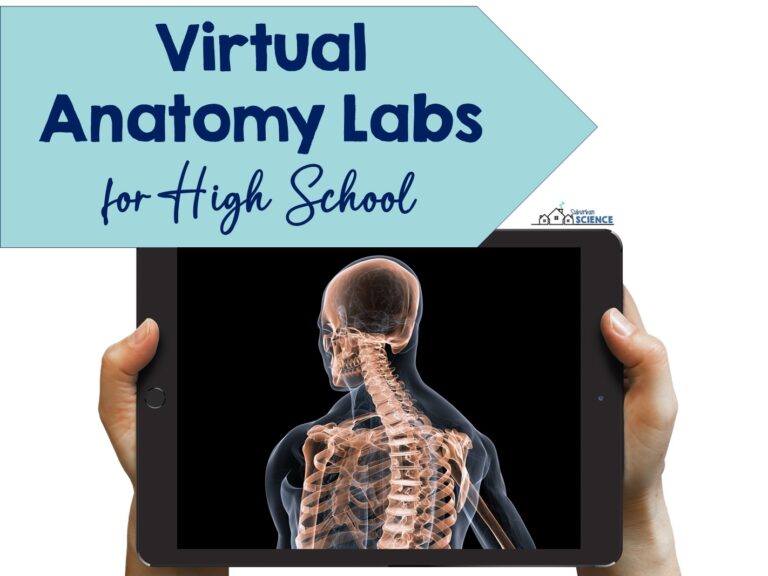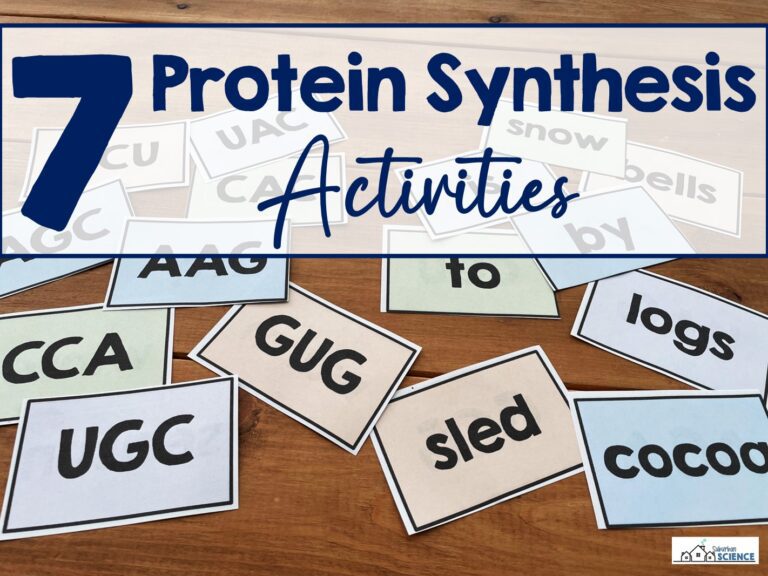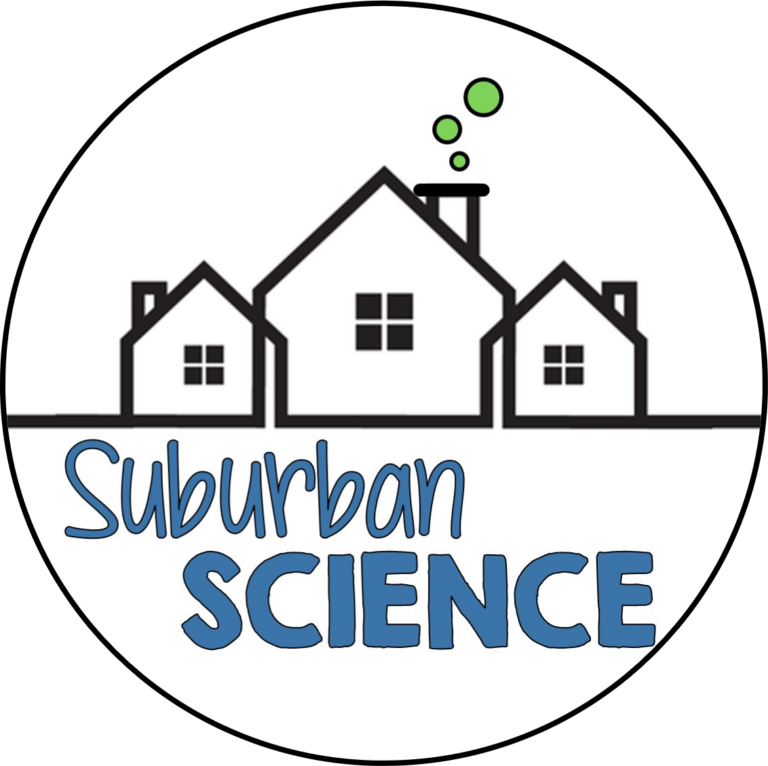Would you like to incorporate more plant experiments for your Biology lesson plans? Not sure how plant labs fit into your course standards? We’ve got some great plant lab ideas for you and will help you see how they can align with the Next Generation High School Life Science Standards*. Below we have listed the main concepts from these standards and high-quality activities to support student learning. For your convenience, specific Life Science standards are listed in parentheses after each activity.

Structure and Function
“How do the structures of organisms enable life’s functions?” (NGSS, 2013). In a Biology course, students can explore plant cells and how they work together to help plants live and grow.
- In these Plant Anatomy Lab Stations, students move through seven labs to learn about plant anatomy and physiology. In one station, students observe models of wood and bark and draw conclusions about the functions of those parts (LS1-2). In another station, students explore how transpiration helps maintain homeostasis in the plant (LS1-3).
- This Free Plant Cell Lab gives many wonderful examples of how students can explore the structure and function of organelles in various types of plant cells (LS1-2) and ends with an explanation of osmosis in plant cells (LS1-3).
- If your students have never observed stomata on leaves, this photosynthesis lab is a great option. The quick and easy procedure will be sure to wow your students (LS1-2). By changing the environment surrounding the stomata, students can also see how guard cells protect the homeostatic balance of water in the leaf (LS1-3).
Matter and Energy in Organisms and Ecosystems
“How do organisms obtain and use energy they need to live and grow? How do matter and energy move through ecosystems?” (NGSS, 2013). In a Biology classroom, students can use live plants to explore the processes of photosynthesis and cellular respiration.
- In this Bromothymol Blue Lab on photosynthesis and cellular respiration, students use their own breath to cause a color change in a solution. They then use variables such as the addition of plants and light to determine which will eliminate the carbon dioxide from the solution (LS1-5, LS 1-7).
- In this FREE Leaf Chromatography Lab, students use litmus paper to observe pigments involved in the photosynthetic process (LS1-5). They are able to explore how photosynthesis transforms light energy into stored energy during various seasons.
Interdependent Relationships in Ecosystems
“How do organisms interact with the living and non-living environment to obtain matter and energy?” (NGSS, 2013). In a Biology or Environmental Science course, students can explore the biodiversity of plants in their area and the effects of human activity on plant ecosystems and forests.
- Students can identify the number of plant species in a local area using quadrats or line transects. This high school Biodiversity Unit shows students how to calculate biodiversity indices and complete a line transect for a local plant community.
- Although forests can be a vital resource for humans, they are impacted by overharvesting and pests. These forestry activities help students to identify the ecological and economic benefits of forests to provide for sustainable practices.
Natural Selection and Evolution
““How can there be so many similarities among organisms yet so many different plants, animals, and microorganisms? How does biodiversity affect humans?” (NGSS, 2013). In a Biology classroom, students can explore how common ancestry and biological evolution are supported in the study of plants.
- This FREE Plant Cladogram Activity, perfect for a unit on evolution, introduces the idea of common ancestry as students make their own cladogram for the plant kingdom. (LS 4-1)
- PBS has an entertaining video showing the evolution of land plants from algae. (LS 4-4)
- Wisconsin Fast Plants(R) has a thorough collection of high school lessons that coordinate with topics like inheritance patterns, variation, and natural selection.
*Please note: NGSS is a registered trademark of WestEd. Neither WestEd nor the lead states and partners that developed the Next Generation Science Standards were involved in the production of these lessons, and do not endorse it.
